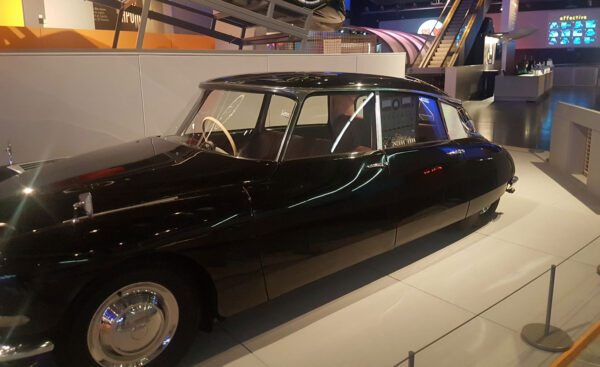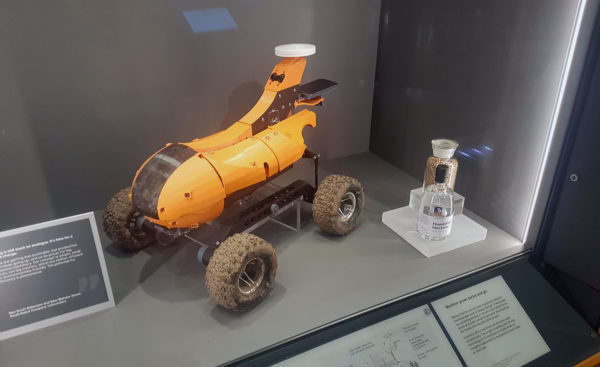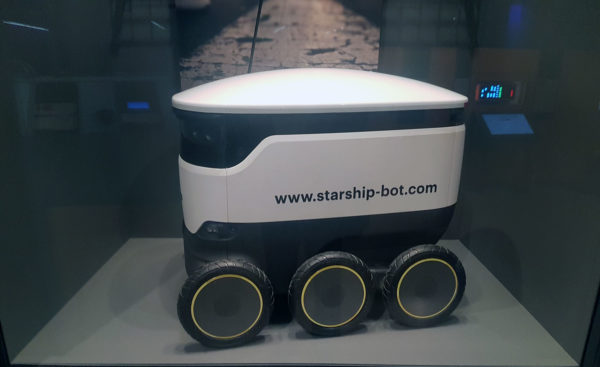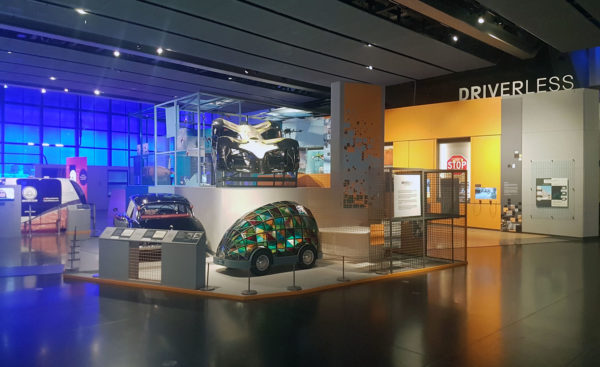Self driving cars may seem like a modern invention, but they’re much older than you might realise.
A new exhibition at the Science Museum shows off an early pioneer — a 1960 Citroen DS19 automatically-guided motor car, with its black sleek lines, and very 1960s looking computer in the back seat.
While most of the headlines are about cars, and their long gestation towards commercial opportunities, it’s elsewhere that autonomous vehicles are already in action.
Not featured are the vast army of bots travelling around factories today — but two interesting devices are on show — a mine sweeper and a farming vehicle. The mine sweeper is a reminder that the future will not look like the present — where too often we are lured into bolting on features to familiar shapes.
The farming bot is shown with that most English of products, a bottle of gin made from the harvest it grew.
Talking of totally British approach, here is the Starship — a home delivery robot that can already be found trundling around the streets of Milton Keynes dropping off parcels, and recently added deliveries of piping hot Fish and Chips to its capabilities.
These sorts of delivery vehicles are likely to be the more commonplace autonomous vehicles of the future — replacing the many vans on the streets with small electric bots.
It’s a modest exhibition, but one that shows the variety of vehicles being developed — and the future is likely to be a vast array of specialised devices for different requirements. Away with the standardised “man and a van” delivering parcels, and hello to a fleet of bots trundling, climbing and flying around the urban spaces.
In a way that’ll be a far bigger change than we have ever experienced in locomotion. The transition from horse carriage, to omnibus to motor vehicle has simply been a change in the power supply, it’s always been basically a cart with wheels and an engine — not really a fundamental change in locomotion as a concept.
The winners of the next few decades of automation will be the companies that ask why a delivery machine or robot needs to look like a rectangle on wheels.
The future will look very strange.
The exhibition, Driverless: Who is in control? is at the Science Museum, is free and open daily until October 2020.










